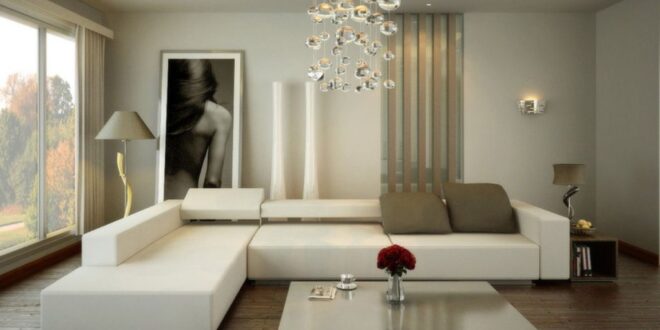The Heart of Your Home: Unveiling Stunning Living Room Design Ideas
The living room. It’s more than just a room; it’s the heart of your home. It’s where you unwind after a long day, entertain guests, and create lasting memories with loved ones. So, naturally, you want it to be a space that’s both beautiful and functional – a reflection of your personal style and a haven for relaxation. But where do you begin? The sheer volume of living room design ideas out there can be overwhelming.
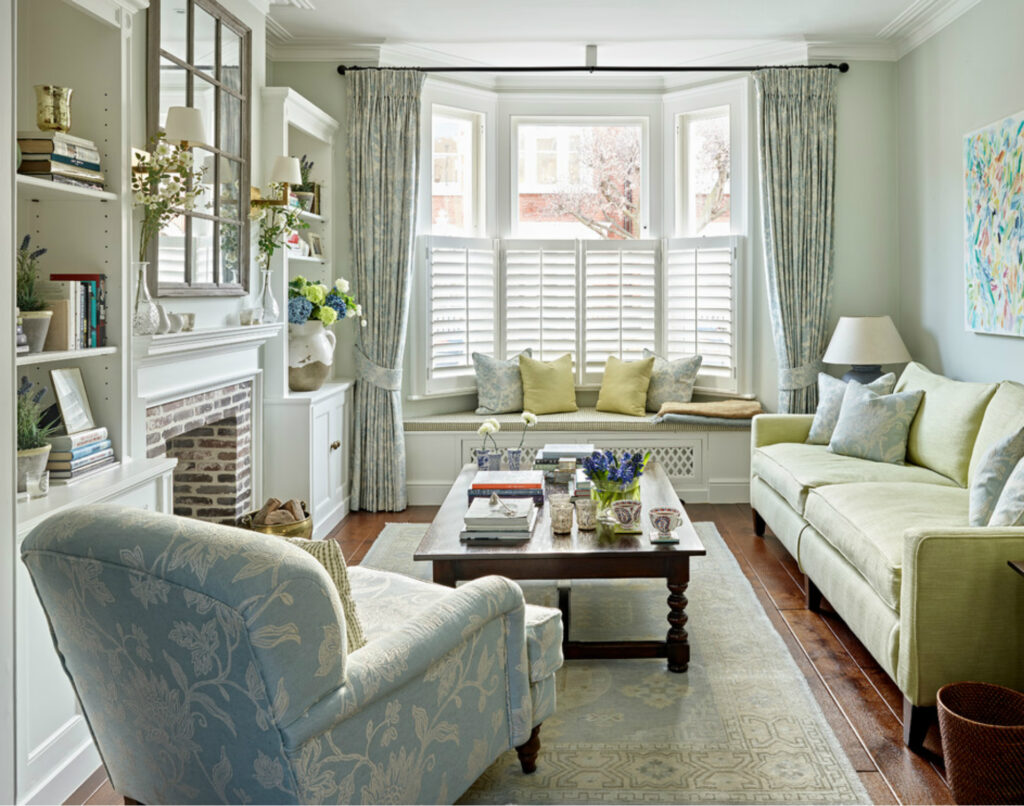
Fear not! This comprehensive guide is packed with inspiring ideas to transform your living room into the space of your dreams. We’ll explore different styles, layouts, color palettes, and furniture options to help you create a living room that’s not only visually appealing but also perfectly suited to your lifestyle.
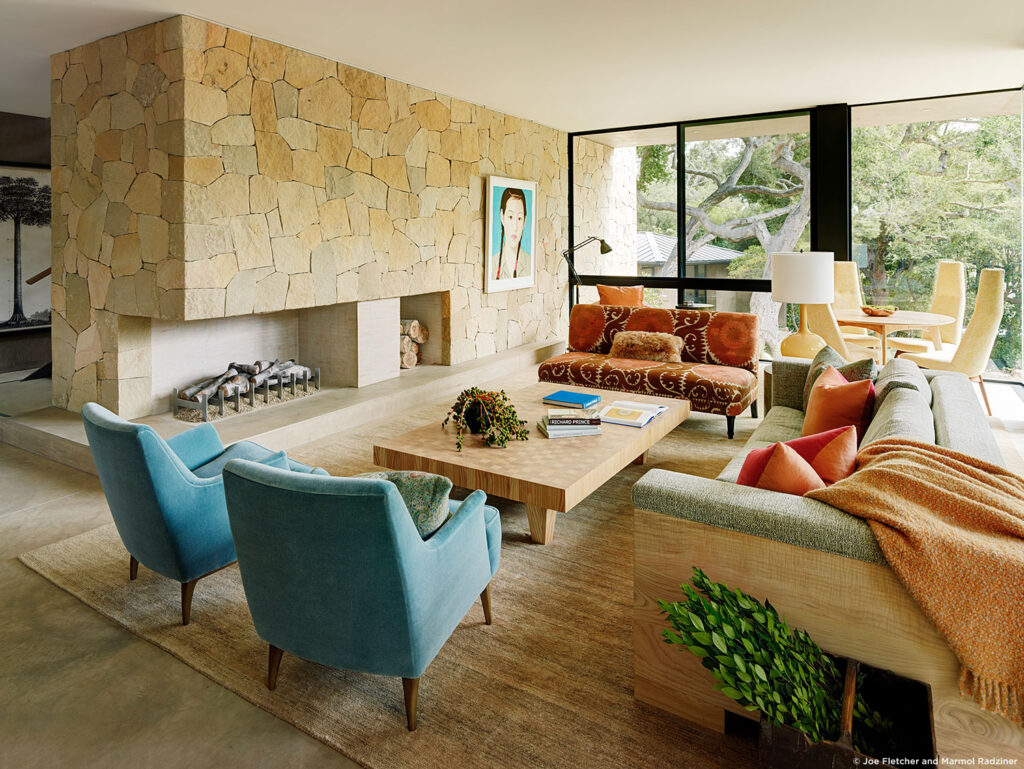
Understanding Your Needs and Style
Before diving into specific design ideas, it’s crucial to take a step back and consider your needs and personal style. Ask yourself these questions:
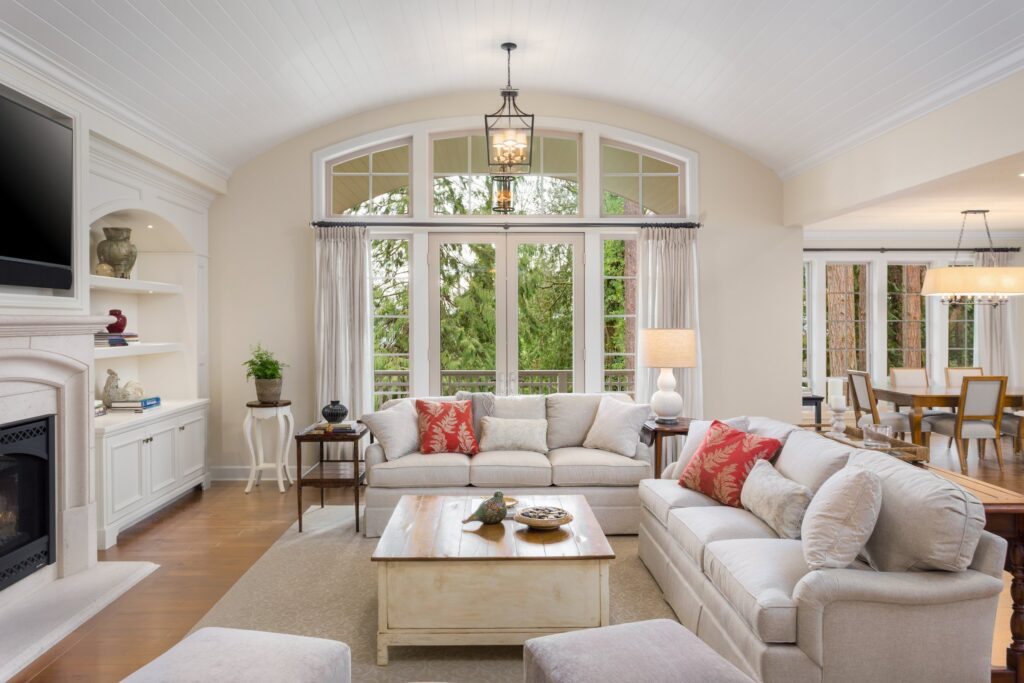
- How do you primarily use your living room? Is it mainly for relaxing and watching TV, entertaining guests, or a combination of both?
- What’s your preferred design style? Do you lean towards modern minimalism, cozy farmhouse, bohemian chic, or something else entirely?
- What’s your budget? Knowing your budget will help you narrow down your options and prioritize your spending.
- How much natural light does your living room receive? This will influence your choice of colors and materials.
- What’s the size of your living room? This will determine the appropriate scale of your furniture.
Answering these questions will provide a solid foundation for making informed design decisions. Don’t be afraid to create a mood board with images and colors that inspire you. This will help you visualize your desired outcome and communicate your vision to any designers or contractors you might be working with. Really think about the existing architecture in your space. Are there any architectural details you want to highlight? Perhaps a beautiful fireplace or large windows with breathtaking views? Make these the focal point of your design, rather than trying to compete with them.
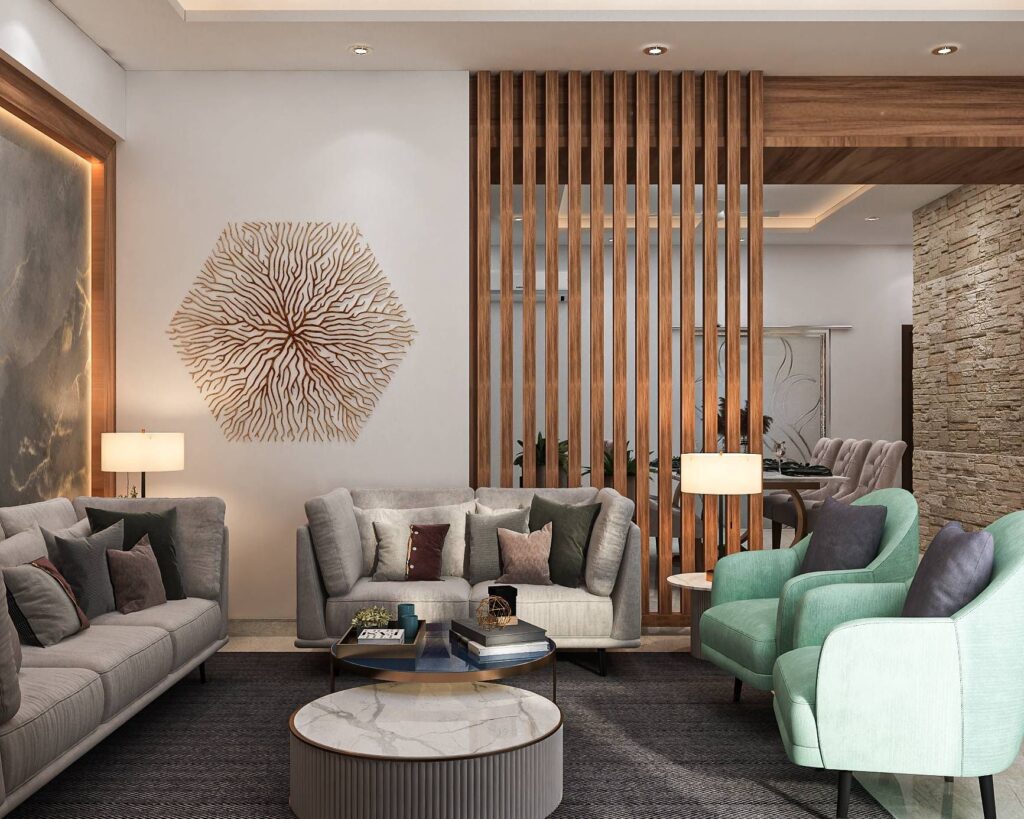
Exploring Different Living Room Styles
Let’s delve into some popular living room styles and explore their defining characteristics:
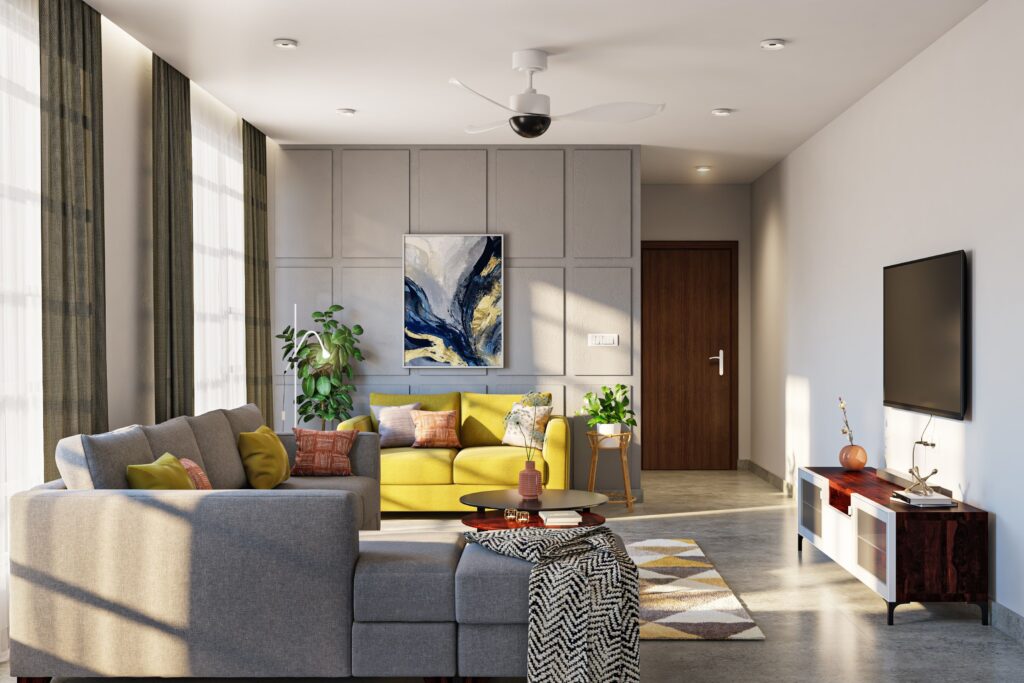
Modern Minimalism: Clean Lines and Functional Simplicity
Modern minimalism embraces clean lines, simple shapes, and a muted color palette. Furniture is typically streamlined and functional, with an emphasis on open space and natural light. Key elements include:
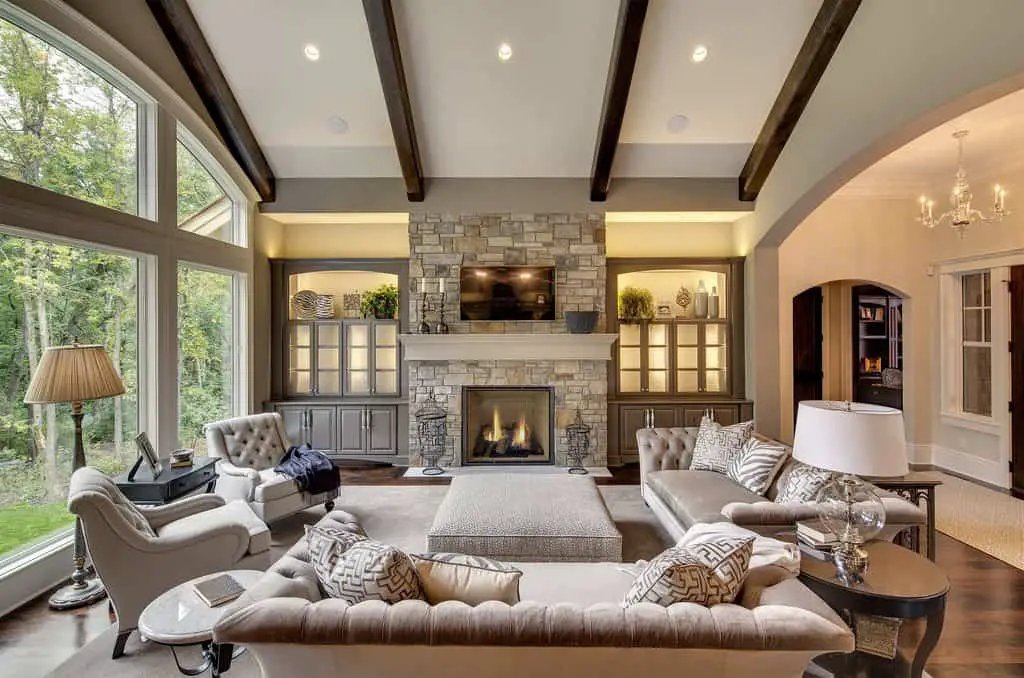
- Neutral Color Palette: Whites, grays, and blacks are dominant, with occasional pops of color.
- Clean Lines: Furniture features straight lines and simple silhouettes.
- Minimal Accessories: Less is more. Choose a few carefully selected accessories to add visual interest.
- Open Space: Avoid clutter and maximize open space to create a sense of calm and serenity.
- Natural Light: Large windows and skylights are essential for creating a bright and airy atmosphere.
Think of a gallery space; the art is highlighted by the sparse surroundings. With minimalist design, each piece of furniture or decor should be carefully considered, serving a purpose and contributing to the overall aesthetic. It’s about creating a sense of calm and order in a busy world. To keep it from feeling sterile, incorporate textural elements like a woven rug or a chunky knit throw. Think about adding one striking piece of art, perhaps a bold abstract painting, to add a focal point to the room.
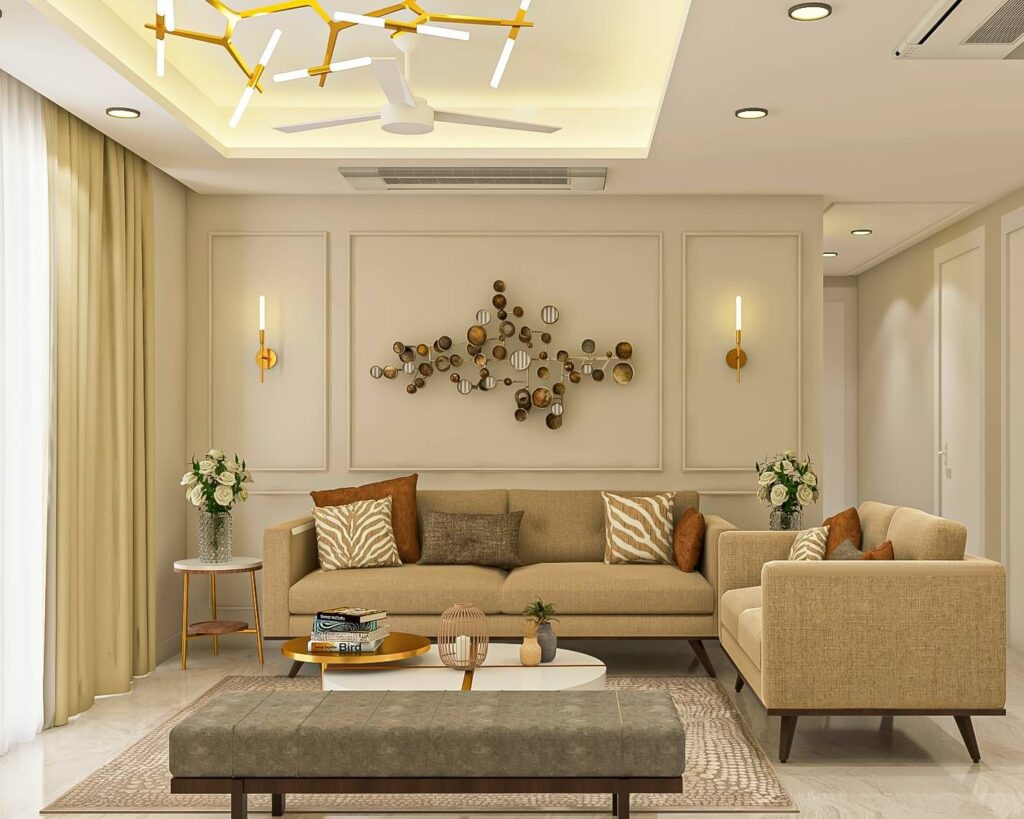
Cozy Farmhouse: Warmth, Comfort, and Rustic Charm
Cozy farmhouse style evokes a sense of warmth, comfort, and rustic charm. It’s all about creating a welcoming and inviting space where you can relax and unwind. Key elements include:
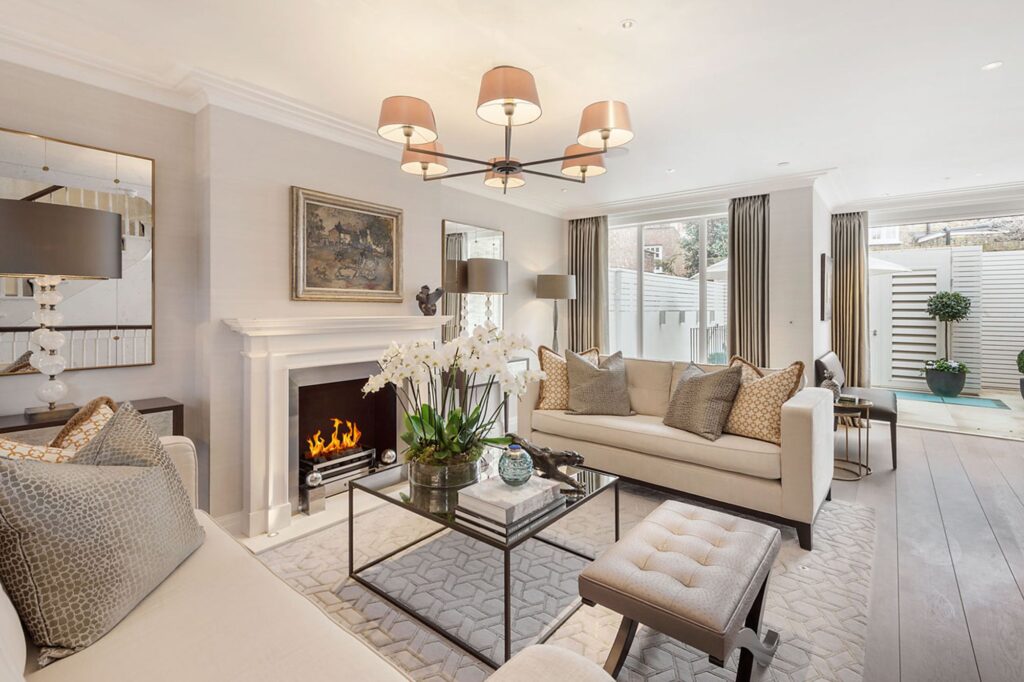
- Natural Materials: Wood, stone, and brick are commonly used to create a rustic feel.
- Warm Color Palette: Creamy whites, soft grays, and earthy tones create a cozy atmosphere.
- Comfortable Furniture: Plush sofas, armchairs, and throw pillows are essential for creating a comfortable space.
- Vintage Accessories: Antique furniture, vintage artwork, and repurposed items add character and charm.
- Fireplace: A fireplace is often the focal point of a farmhouse living room, providing warmth and ambiance.
Imagine a crackling fire, the smell of freshly baked bread, and the soft glow of candlelight. Farmhouse style is all about creating that feeling of comfort and nostalgia. Reclaimed wood furniture, like a coffee table made from an old barn door, adds a touch of history and character. Don’t be afraid to mix and match patterns and textures to create a layered and inviting space. Think about incorporating elements like galvanized metal accents, vintage signs, and woven baskets to add to the rustic charm. A large, comfortable rug underfoot will anchor the space and add to the overall feeling of warmth.

Bohemian Chic: Eclectic, Colorful, and Free-Spirited
Bohemian chic is an eclectic and free-spirited style that embraces color, pattern, and texture. It’s all about creating a unique and personalized space that reflects your individual personality. Key elements include:
- Bold Colors: Rich jewel tones, vibrant hues, and unexpected color combinations are encouraged.
- Mix-and-Match Patterns: Don’t be afraid to mix different patterns and textures to create a layered look.
- Global Influences: Incorporate elements from different cultures, such as Moroccan rugs, Indian textiles, and African art.
- Comfortable Seating: Floor cushions, poufs, and oversized sofas are perfect for creating a relaxed and inviting atmosphere.
- Plants: Bring the outdoors in with plenty of plants to add life and vibrancy to the space.
Think of a traveler’s suitcase filled with treasures from around the world. Bohemian chic is all about self-expression and embracing individuality. Layering is key: start with a neutral base and then add layers of color, pattern, and texture to create a visually rich and stimulating space. Don’t be afraid to experiment and break the rules! The more personal and unique your space is, the more authentic it will feel. Incorporate elements like macramé wall hangings, vintage tapestries, and quirky collectibles to add to the bohemian vibe. A comfortable seating area with plenty of pillows and blankets is essential for creating a relaxed and inviting space.
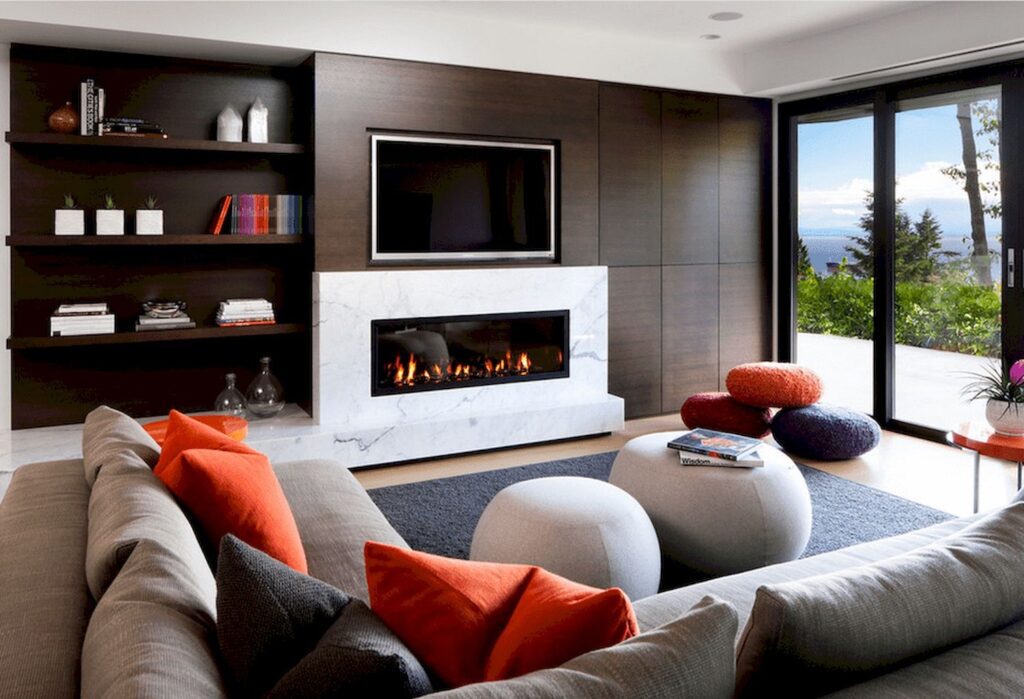
Contemporary Style: A Blend of Modern and Traditional
Contemporary style is often confused with modern style, but they are distinct. Contemporary design is constantly evolving and reflects the current trends. It’s a blend of modern and traditional elements, creating a sophisticated and stylish look. Key elements include:

- Neutral Palette with Pops of Color: Focus on a core of neutral colors like white, gray, and beige, but add in bright pops of color through artwork, accessories, or a statement piece of furniture.
- Emphasis on Texture: Texture is crucial in a contemporary space. Think of incorporating different fabrics, materials, and finishes to add depth and visual interest.
- Sculptural Furniture: Furniture is often sculptural and artistic, serving as both functional pieces and works of art.
- Open Floor Plans: Contemporary design often favors open floor plans to create a sense of spaciousness and flow.
- Sleek and Minimalist Accessories: Accessories are carefully curated and kept to a minimum.
The key to mastering contemporary style is to strike a balance between comfort and sophistication. The goal is to create a space that feels both inviting and stylish. Consider incorporating elements like a large abstract painting, a sculptural coffee table, or a statement lighting fixture to add visual interest. Use different textures, such as velvet, leather, and linen, to create depth and dimension. Avoid clutter and keep the space clean and organized.
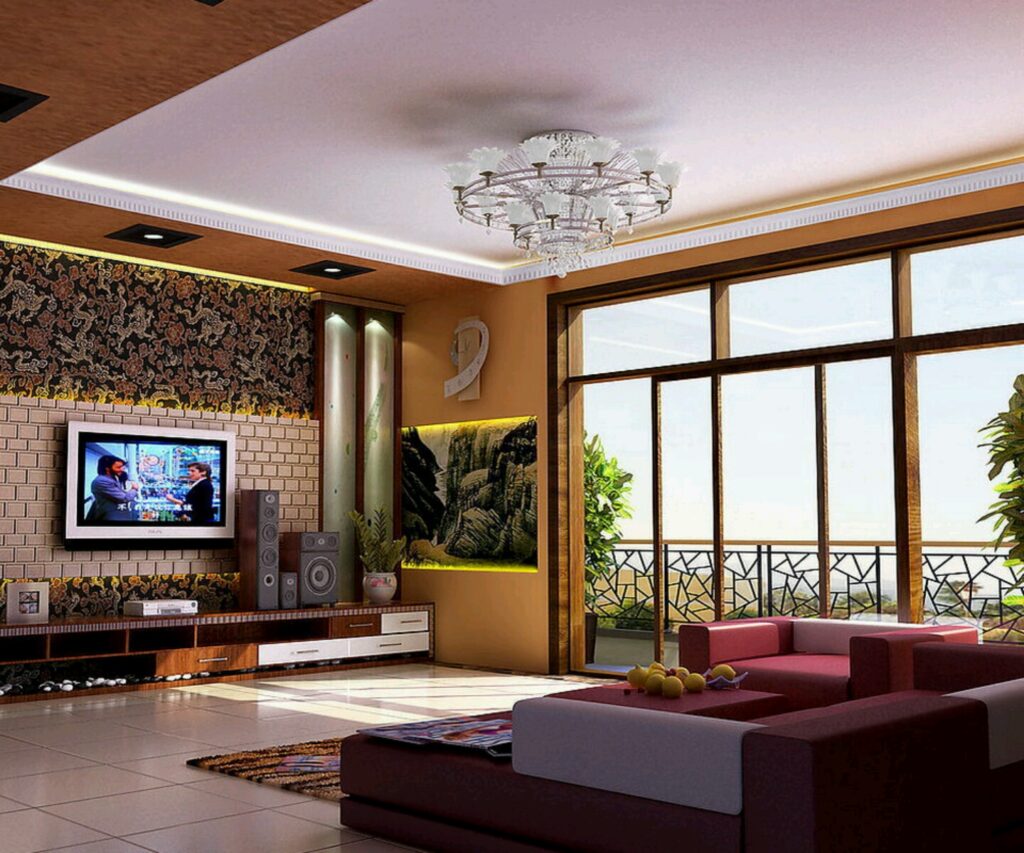
Essential Elements of a Well-Designed Living Room
Regardless of your chosen style, there are certain essential elements that contribute to a well-designed living room:

Furniture: Comfort and Functionality
Choosing the right furniture is crucial for creating a comfortable and functional living room. Consider these factors:

- Sofa: The sofa is often the focal point of the living room. Choose a sofa that’s comfortable, stylish, and the right size for your space.
- Armchairs: Armchairs provide additional seating and can be used to create a cozy conversation area.
- Coffee Table: A coffee table provides a surface for drinks, snacks, and books. Choose a coffee table that’s the right height and size for your sofa.
- Side Tables: Side tables provide a convenient place to place lamps, books, and other essentials.
- Media Console: A media console is essential for storing your television, audio equipment, and other media devices.
Think about the flow of traffic in your living room when arranging your furniture. You want to create a space that’s easy to navigate and encourages conversation. Consider creating distinct zones within your living room, such as a seating area for conversation and a reading nook. Choose furniture that’s not only stylish but also durable and easy to maintain. The right furniture will not only enhance the look of your living room but also make it a more comfortable and enjoyable space to spend time in.
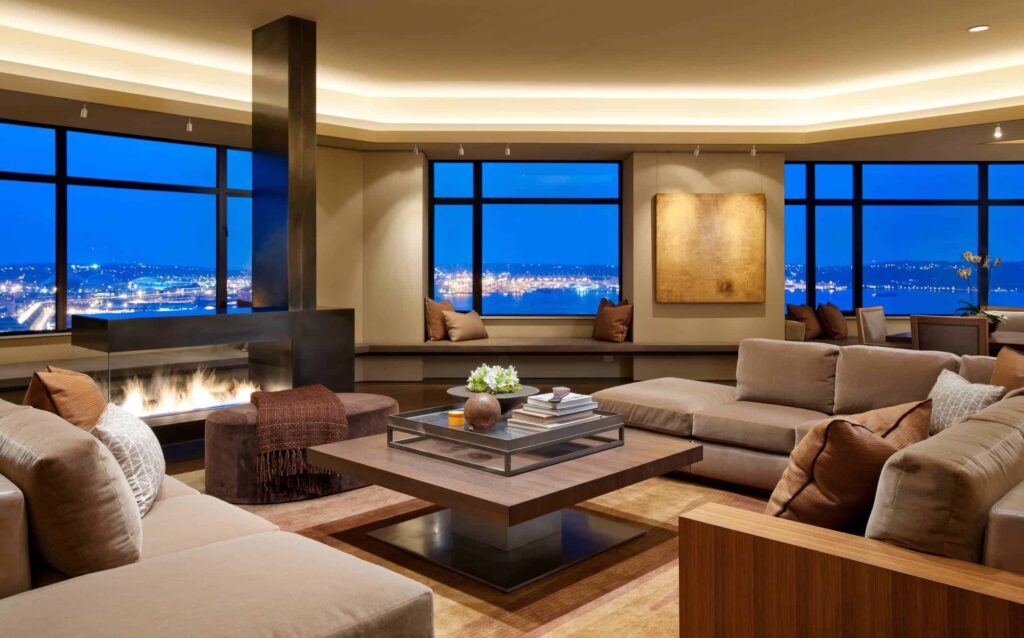
Color Palette: Setting the Mood
The color palette plays a significant role in setting the mood of your living room. Consider these tips:
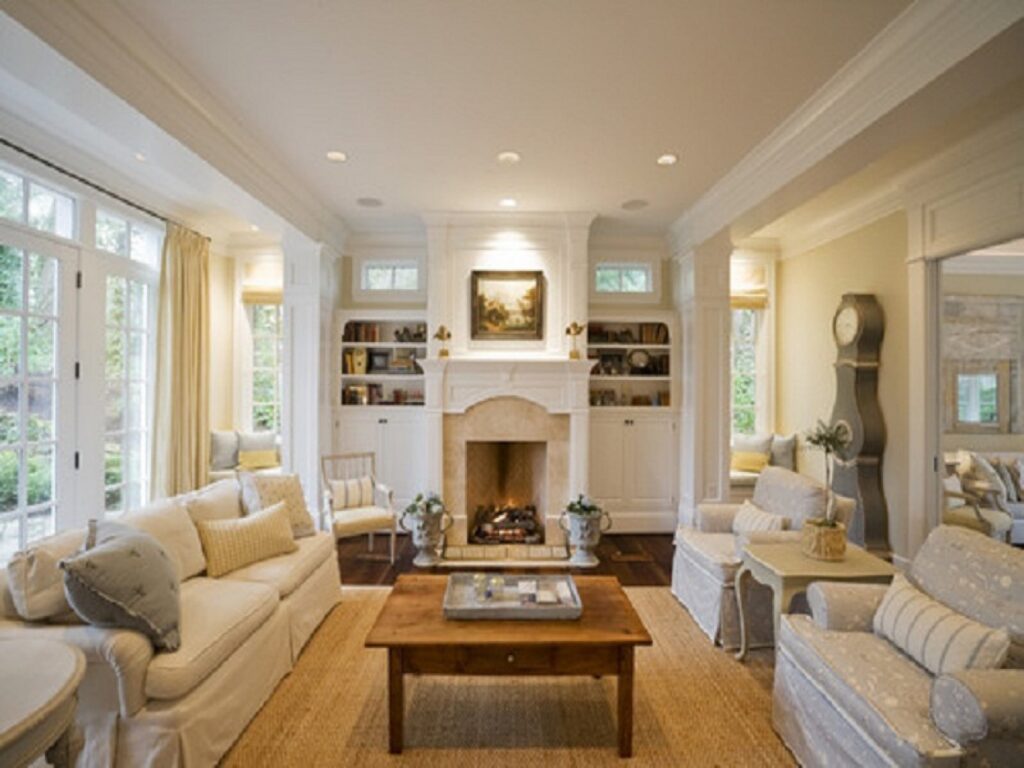
- Light and Airy: Use light and airy colors, such as white, cream, and pale gray, to create a sense of spaciousness and tranquility.
- Warm and Inviting: Use warm colors, such as beige, brown, and gold, to create a cozy and inviting atmosphere.
- Bold and Dramatic: Use bold colors, such as navy blue, emerald green, and ruby red, to create a dramatic and sophisticated look.
- Consider the Light: The amount of natural light in your living room will affect how colors appear. Test paint colors in different lighting conditions before making a final decision.
Don’t be afraid to experiment with different color combinations to find what works best for you. Consider using a color wheel to help you choose colors that complement each other. Remember that color is a powerful tool that can be used to transform the look and feel of your living room. A fresh coat of paint can make a huge difference in the overall appearance of the room, so choose your colors wisely. Use color to highlight architectural features, such as a fireplace or built-in bookshelves. And don’t forget to incorporate color through accessories, such as throw pillows, blankets, and artwork.
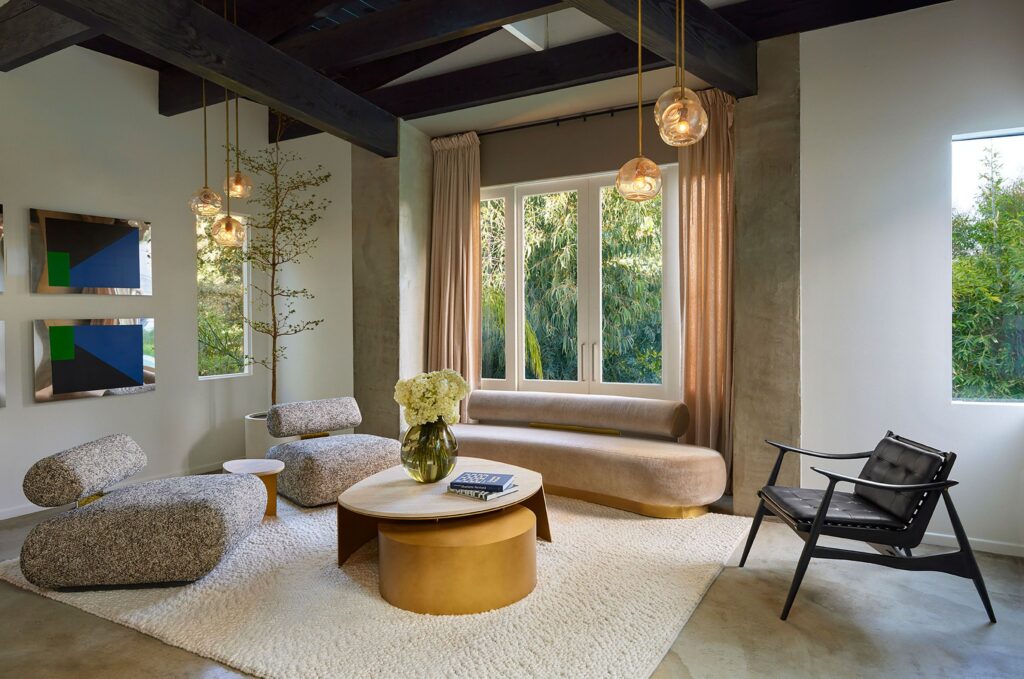
Lighting: Creating Ambiance
Lighting is essential for creating ambiance in your living room. Consider these different types of lighting:

- Ambient Lighting: Provides overall illumination for the room. Examples include recessed lighting, chandeliers, and ceiling fixtures.
- Task Lighting: Provides focused light for specific tasks, such as reading or working. Examples include floor lamps, table lamps, and desk lamps.
- Accent Lighting: Highlights specific features, such as artwork or architectural details. Examples include track lighting, spotlights, and wall sconces.
Layering your lighting is key to creating a well-lit and inviting living room. Use a combination of ambient, task, and accent lighting to create a space that’s both functional and beautiful. Dimmers are a great way to control the intensity of your lighting and create different moods. Consider using smart lighting systems that allow you to adjust the lighting from your smartphone or tablet. And don’t forget the power of natural light. Maximize the amount of natural light in your living room by keeping windows clean and free of obstructions.
Accessories: Adding Personality
Accessories are the finishing touches that add personality to your living room. Consider these ideas:
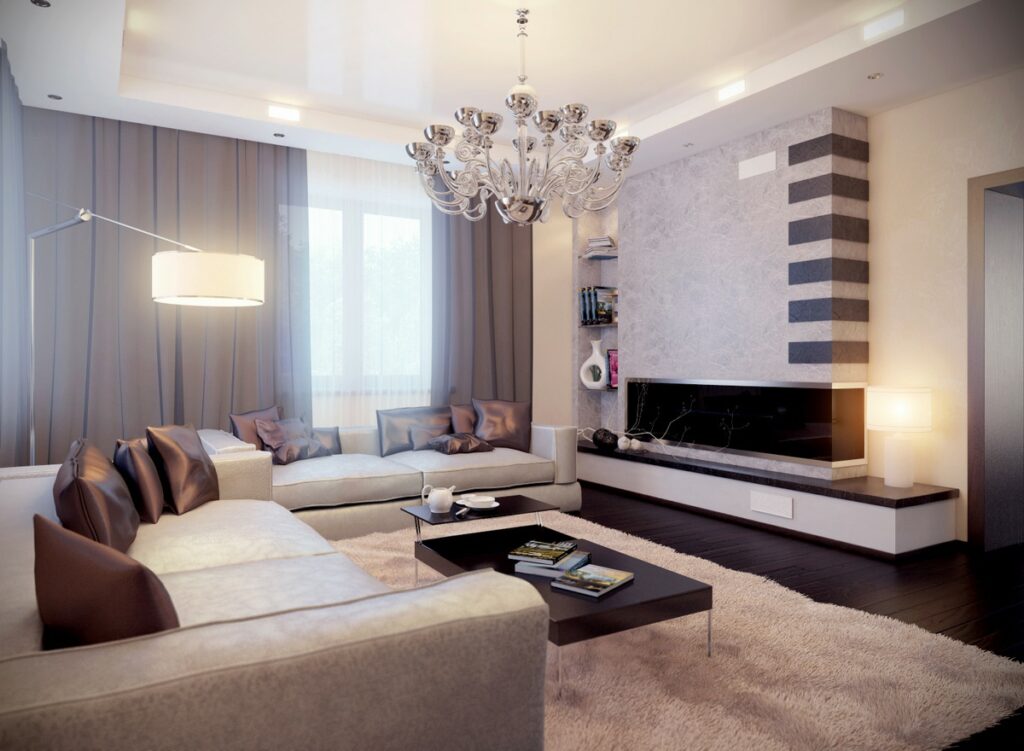
- Throw Pillows: Add comfort and style to your sofa and armchairs with throw pillows in different colors, patterns, and textures.
- Blankets: Drape a cozy blanket over your sofa or armchair for added warmth and comfort.
- Rugs: Anchor your furniture and add warmth and texture to your living room with a rug.
- Artwork: Hang artwork that reflects your personal style and adds visual interest to the walls.
- Plants: Bring the outdoors in with plants to add life and vibrancy to the space.
- Books: Display your favorite books on shelves or coffee tables to add personality and character.
- Candles and Diffusers: Create a relaxing and inviting atmosphere with candles and diffusers.
Choose accessories that reflect your personal style and interests. Don’t be afraid to mix and match different styles and textures to create a unique and personalized look. Remember that accessories are a great way to add pops of color and personality to your living room without making a major investment. Rotate your accessories seasonally to keep your living room looking fresh and updated. And don’t be afraid to declutter and get rid of items that you no longer love or need.
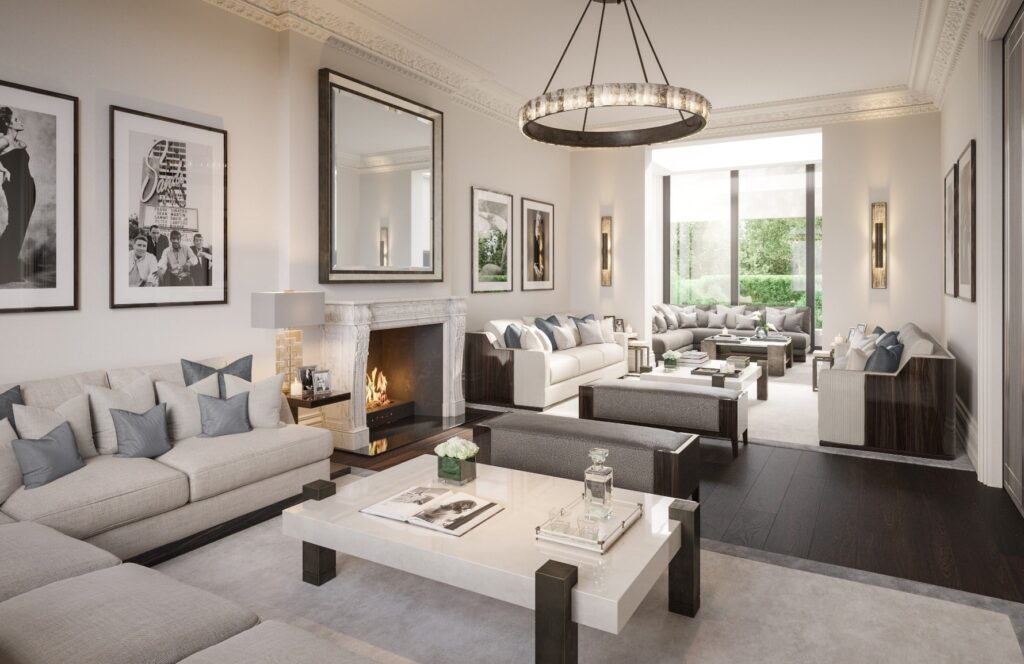
Layout Considerations: Optimizing Space and Flow
The layout of your living room is just as important as the furniture and decor. Here are some layout considerations to optimize space and flow:
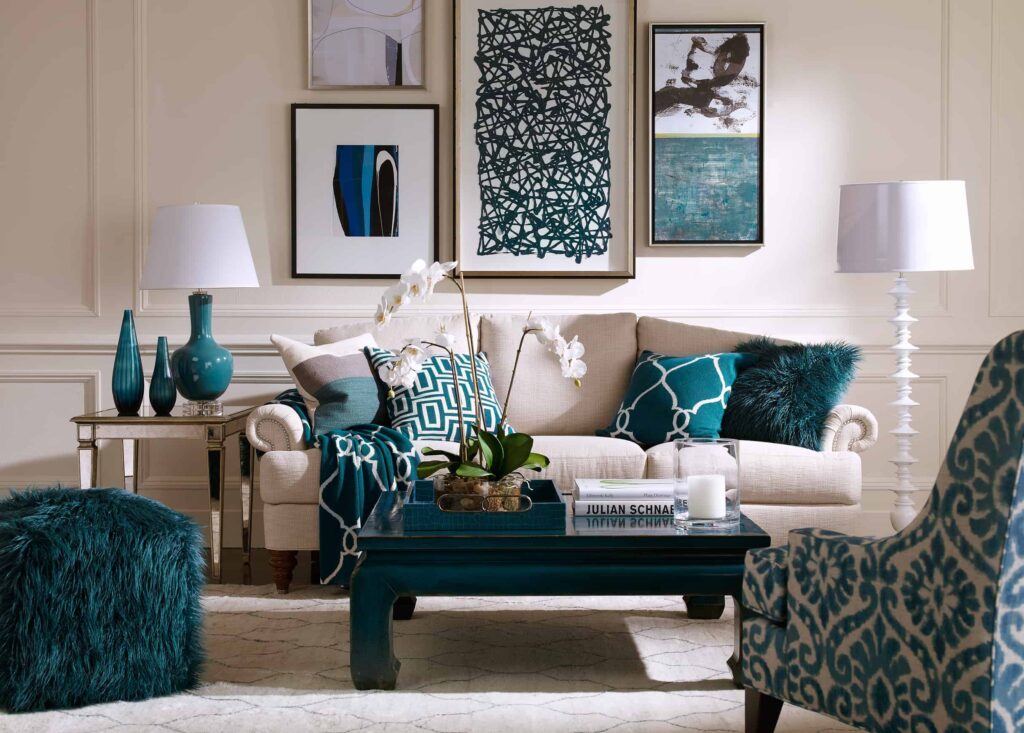
Focal Point: Establishing a Center of Attention
Every living room should have a focal point, which is the first thing that catches your eye when you enter the room. Common focal points include:
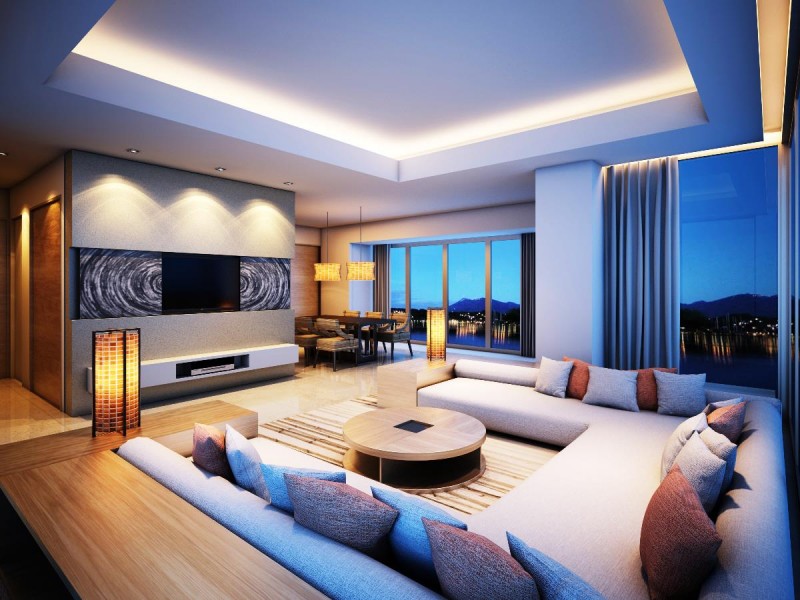
- Fireplace: A fireplace is a natural focal point and can be enhanced with decorative mantels and accessories.
- Large Window: A large window with a view can serve as a stunning focal point.
- Artwork: A large piece of artwork can be a dramatic and eye-catching focal point.
- Television: If your television is the primary focal point, consider concealing it when not in use.
Arrange your furniture around the focal point to create a cohesive and balanced layout. Consider the placement of your seating area in relation to the focal point. You want to create a space that encourages conversation and allows for comfortable viewing of the focal point. Avoid blocking the view of the focal point with furniture or accessories.
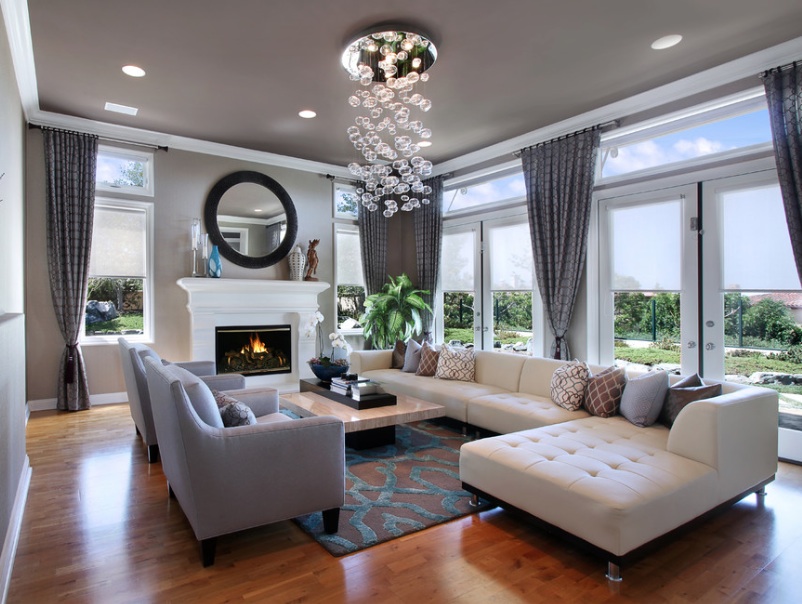
Traffic Flow: Ensuring Easy Movement
Consider the traffic flow in your living room when arranging your furniture. You want to create a space that’s easy to navigate and allows for comfortable movement. Avoid placing furniture in walkways or creating obstacles that people have to navigate around. Leave enough space between furniture pieces to allow for easy passage. Consider the placement of doors and windows when arranging your furniture. You want to avoid blocking doors or windows with furniture.
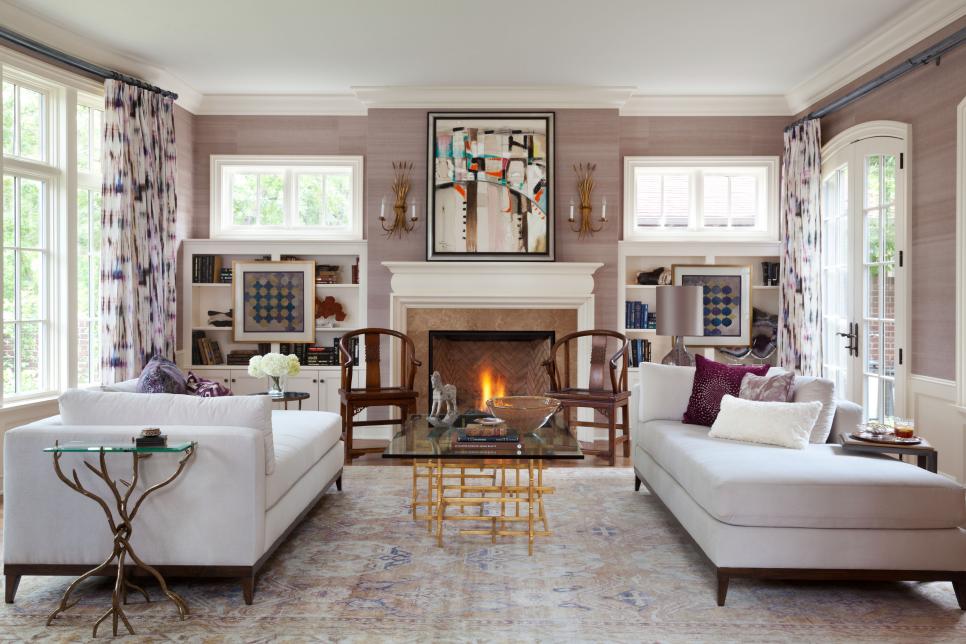
Creating Zones: Defining Different Areas
If you have a large living room, consider creating different zones for different activities. For example, you could create a seating area for conversation, a reading nook, and a play area for children. Use rugs, furniture placement, and lighting to define the different zones. This will help to make your living room feel more organized and functional.
Small Living Room Ideas: Maximizing Space
Designing a small living room can be challenging, but it’s definitely possible to create a stylish and functional space. Here are some tips for maximizing space in a small living room:
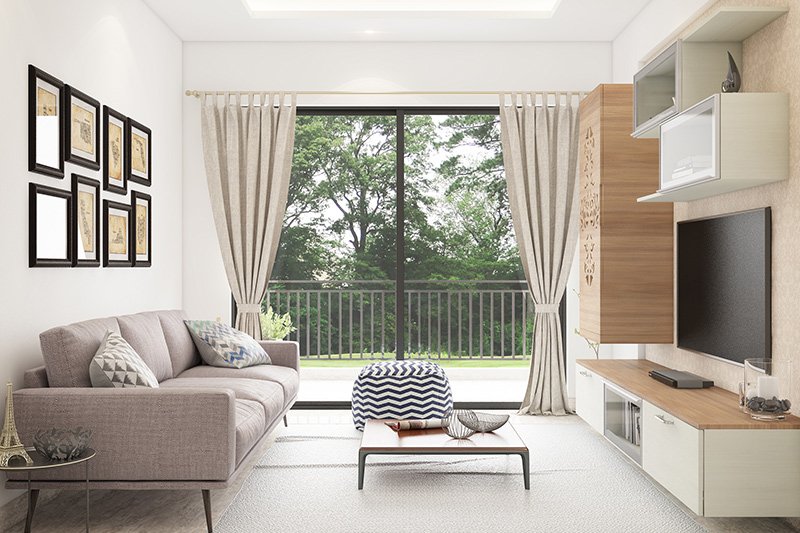
- Choose Multifunctional Furniture: Opt for furniture that serves multiple purposes, such as a sofa bed or a coffee table with storage.
- Use Vertical Space: Utilize vertical space by adding shelves, wall-mounted storage, or tall bookcases.
- Mirror, Mirror: Mirrors can create the illusion of more space by reflecting light and creating depth.
- Light Colors: Use light colors on the walls and furniture to create a brighter and more open space.
- Keep it Minimal: Avoid clutter and keep the space as minimal as possible.
- Wall-Mounted TV: Mounting your TV on the wall saves floor space and creates a cleaner look.
Living Room on a Budget: Affordable Design Solutions
Creating a beautiful living room doesn’t have to break the bank. Here are some affordable design solutions:
- Shop Secondhand: Check out thrift stores, flea markets, and online marketplaces for affordable furniture and accessories.
- DIY Projects: Get creative with DIY projects to add personality to your living room without spending a lot of money.
- Repurpose Existing Items: Repurpose items you already have to create new and unique pieces of decor.
- Focus on Key Pieces: Invest in a few key pieces of furniture that will last for years, and then fill in the gaps with more affordable items.
- Paint is Your Friend: A fresh coat of paint is one of the most affordable ways to transform the look of your living room.
Final Thoughts: Creating a Living Room You’ll Love
Designing a living room is a personal journey. Take the time to explore different styles, experiment with different layouts, and choose furniture and accessories that reflect your personal taste. Don’t be afraid to break the rules and create a space that’s uniquely you. With a little planning and creativity, you can transform your living room into a space you’ll love for years to come. Ultimately, the best living room design is one that makes you feel comfortable, relaxed, and happy.
 Nimila
Nimila
